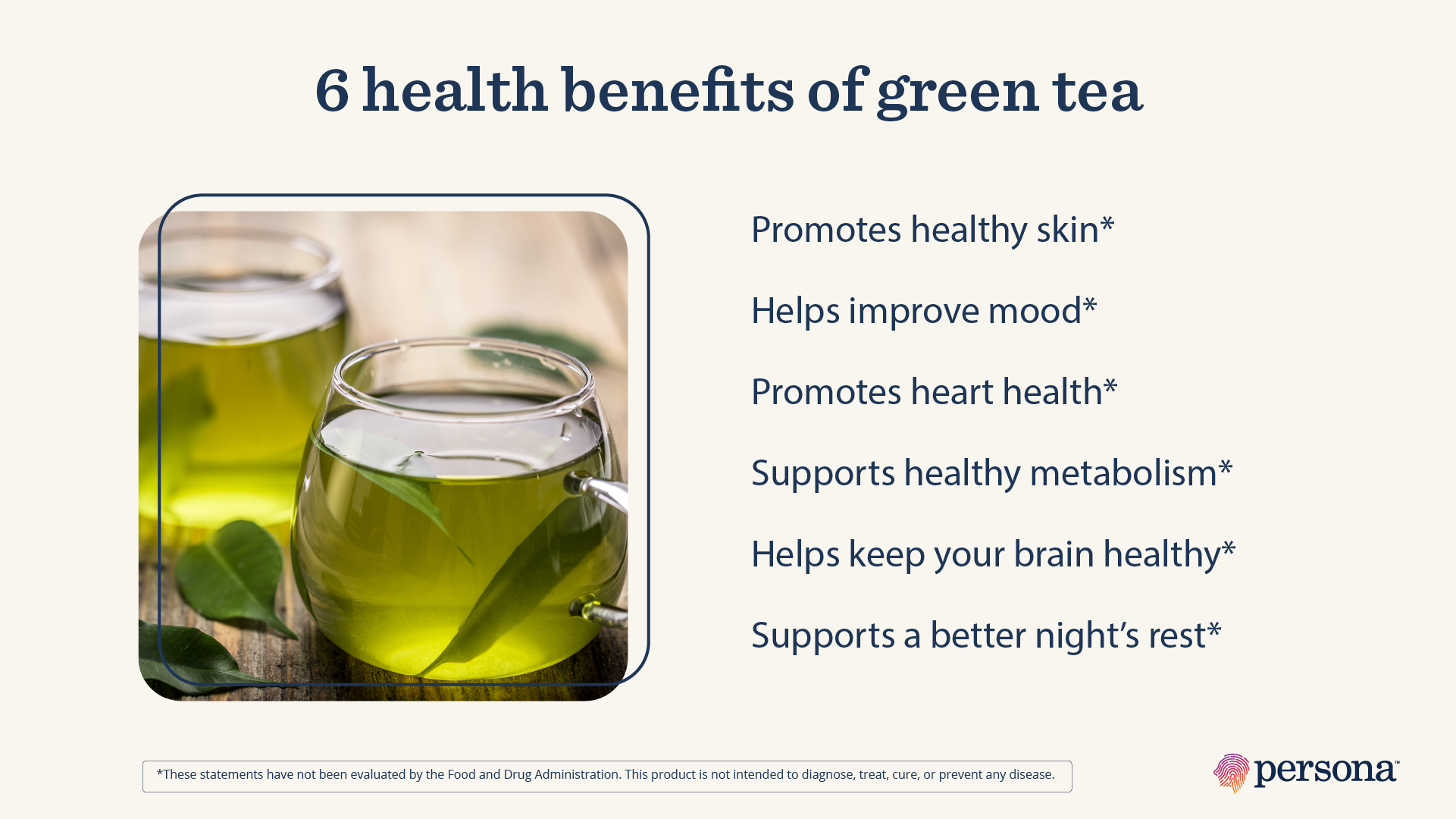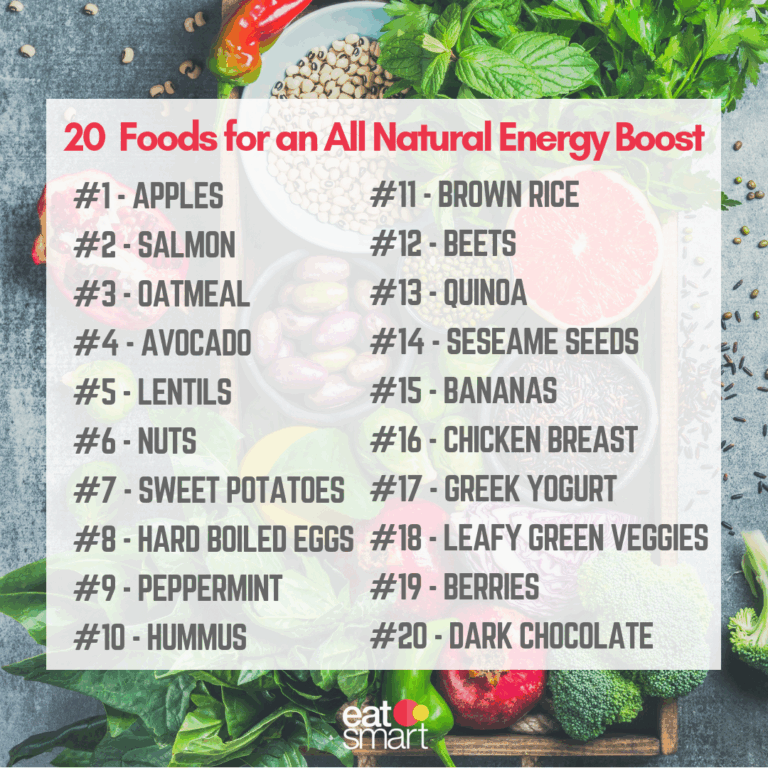The Emerald Elixir: Is Green Tea Truly Good For You? Unveiling Its Nutritional Tapestry and Ancient Wisdom
In the tapestry of human history, few beverages command as much reverence and intrigue as tea. Among its many hues, green tea stands out, not merely as a drink, but as a cultural cornerstone, a ritual, and, increasingly, a subject of intense scientific scrutiny. From the mist-shrouded mountains of East Asia to the bustling laboratories of the West, the simple, emerald leaf of Camellia sinensis has embarked on a remarkable journey, whispering tales of wellness and longevity across millennia. But beyond the whispers and ancient traditions, in the cold light of modern science, is green tea truly as good for you as its reputation suggests?
To answer this question, we must embark on our own journey, delving deep into the very essence of green tea – its botanical origins, its unique processing, and, most importantly, the intricate symphony of compounds that orchestrate its profound effects on human health. For the knowledgeable connoisseur and the health-conscious seeker alike, the story of green tea is not just a collection of facts; it is an unfolding narrative of nature’s quiet power, patiently awaiting discovery in every fragrant cup.
A Leaf’s Journey: From Bush to Brew, A Story of Preservation
All true teas – green, black, oolong, white, and pu-erh – originate from the same plant, Camellia sinensis. Yet, their distinct characters, flavors, and indeed, their biochemical profiles, emerge from the meticulous art of their processing. While black tea undergoes full oxidation, turning its leaves dark and developing robust, malty notes, green tea’s magic lies in its deliberate prevention of oxidation.
Immediately after harvesting, the fresh leaves destined to become green tea are subjected to heat, typically through steaming (as in most Japanese green teas like Sencha or Gyokuro) or pan-firing (common in Chinese green teas like Dragonwell). This crucial step deactivates the enzymes responsible for oxidation, preserving the leaf’s vibrant green color and, critically, its delicate array of polyphenols and other beneficial compounds. It is this gentle handling, this swift arrest of natural decay, that sets green tea apart and underpins its celebrated health attributes.
The world of green tea is vast and varied, a testament to regional terroir and artisanal mastery. Japanese green teas, often steamed, tend to be more vibrant, sometimes with marine or grassy notes. Sencha, the most common variety, offers a balanced, refreshing cup. Gyokuro, shade-grown, boasts a rich umami flavor. Matcha, a powdered green tea also shade-grown, is celebrated for its intense color, frothy texture, and the fact that one consumes the entire leaf, thereby ingesting a higher concentration of its compounds. Chinese green teas, frequently pan-fired, often present a toastier, nuttier, or sometimes smoky profile, exemplified by Lung Ching (Dragonwell) or Bi Luo Chun. Each variety, while sharing the fundamental "green" character, offers a unique sensory and nutritional experience, underscoring the depth of this ancient beverage.
The Symphony of Compounds: Green Tea’s Nutritional Core
The true marvel of green tea lies not in a single "miracle molecule," but in the intricate interplay of hundreds of bioactive compounds, working in concert to bestow its health benefits. This complex synergy is what distinguishes the whole food matrix of green tea from isolated supplements.
The Catechins: Guardians Against Oxidation
At the forefront of green tea’s beneficial compounds are the catechins, a group of polyphenols that function as potent antioxidants. The most abundant and extensively studied catechin in green tea is Epigallocatechin Gallate (EGCG). Other significant catechins include Epigallocatechin (EGC), Epicatechin Gallate (ECG), and Epicatechin (EC).
These catechins are powerful free radical scavengers. Free radicals are unstable molecules that can cause oxidative stress, damaging cells and DNA, and contributing to chronic diseases like cancer, heart disease, and neurodegenerative disorders. EGCG, in particular, has demonstrated exceptional antioxidant activity, many times more potent than Vitamin C or E. Beyond their direct antioxidant role, catechins also modulate cellular signaling pathways, influencing gene expression, enzyme activity, and cell proliferation, offering a multi-faceted approach to health protection.
L-Theanine: The Zen Master’s Secret
Unique to tea (and a few mushrooms), L-Theanine is an amino acid responsible for green tea’s distinctive umami flavor and its remarkable ability to induce a state of calm alertness. Unlike the jittery rush often associated with coffee, the caffeine in green tea, when combined with L-Theanine, produces a smoother, more sustained focus.
L-Theanine crosses the blood-brain barrier and influences neurotransmitters. It increases alpha brain wave activity, which is associated with a relaxed, yet attentive mental state, similar to that experienced during meditation. It also boosts levels of GABA (gamma-aminobutyric acid), a neurotransmitter that has an inhibitory effect on brain activity, reducing anxiety and promoting relaxation. Furthermore, L-Theanine can increase dopamine and serotonin levels, enhancing mood and cognitive function. This synergistic relationship between L-Theanine and caffeine is a cornerstone of green tea’s unique impact on mental well-being.
Caffeine: A Gentle Stimulant
While less abundant than in coffee, green tea does contain caffeine. The amount varies depending on the tea variety, processing, and brewing method, but it generally ranges from 20-45 mg per 8-ounce cup, compared to 95-200 mg in coffee. This lower dose, coupled with the moderating effects of L-Theanine, provides a gentle, sustained energy boost without the sharp peaks and crashes. Caffeine itself is a central nervous system stimulant, enhancing alertness, improving mood, and aiding cognitive performance.
Vitamins, Minerals, and More
Green tea is also a source of various micronutrients, albeit in smaller quantities. It contains Vitamin K, important for blood clotting and bone health; Vitamin C, another antioxidant; and some B vitamins like folate. Essential minerals present include manganese (involved in bone development and metabolism), potassium (crucial for blood pressure regulation), magnesium (involved in over 300 biochemical reactions), zinc, and selenium.
Other beneficial compounds include flavonoids (another class of antioxidants), chlorophyll (responsible for the green color, potentially aiding detoxification), and saponins (which have anti-inflammatory and cholesterol-lowering properties). This rich tapestry of compounds paints a comprehensive picture of green tea as a holistic health tonic.
The Scientific Unveiling: A Deep Dive into Health Benefits
With its formidable arsenal of bioactive compounds, green tea has become a focal point for extensive scientific research. The evidence, while still evolving, strongly supports many of its traditional claims, painting a picture of a beverage that profoundly influences multiple facets of human health.
1. The Apex of Antioxidant Power and Cellular Protection
At the heart of green tea’s protective prowess is its unparalleled antioxidant capacity. Oxidative stress, the imbalance between free radical production and the body’s ability to neutralize them, is a fundamental driver of aging and chronic disease. Green tea catechins, particularly EGCG, act as powerful scavengers, neutralizing these damaging free radicals.
Beyond direct scavenging, catechins also bolster the body’s endogenous antioxidant defense systems, upregulating enzymes like superoxide dismutase (SOD) and catalase. This dual action provides robust cellular protection, safeguarding DNA, proteins, and lipids from oxidative damage, thereby reducing the risk of inflammation, cellular dysfunction, and the initiation of various pathologies.
2. Guardian of the Heart: Cardiovascular Health
Cardiovascular disease remains the leading cause of death globally, making green tea’s impact on heart health particularly significant. Numerous studies have demonstrated green tea’s ability to positively influence several key risk factors:
- Cholesterol Levels: Green tea consumption is associated with modest reductions in LDL (bad) cholesterol and total cholesterol levels, while potentially increasing HDL (good) cholesterol. Catechins interfere with the absorption of dietary fats and cholesterol in the gut, and may also inhibit cholesterol synthesis in the liver.
- Blood Pressure: Regular green tea intake has been linked to small but significant reductions in both systolic and diastolic blood pressure, particularly in individuals with pre-existing hypertension. This effect is attributed to catechins’ ability to improve endothelial function (the lining of blood vessels) and promote vasodilation.
- Endothelial Function: EGCG helps maintain the flexibility and health of blood vessel walls, crucial for proper blood flow. It also reduces the oxidation of LDL cholesterol, a critical step in the formation of arterial plaque.
- Anti-inflammatory Effects: Chronic low-grade inflammation plays a key role in atherosclerosis. Green tea’s anti-inflammatory properties, largely mediated by catechins, help to mitigate this process, protecting the arteries from damage.
Long-term epidemiological studies have consistently shown that regular green tea drinkers have a lower risk of developing heart disease and stroke.
3. Fueling the Mind: Brain Health and Cognitive Function
The calming yet alert state induced by green tea hints at its profound effects on the brain. The synergy between L-Theanine and caffeine is central to this:
- Improved Cognitive Function: L-Theanine enhances alpha wave activity, promoting a state of relaxed focus, while caffeine provides a gentle stimulant effect. Together, they can improve attention, memory, and problem-solving abilities without the jitters or crash associated with higher doses of caffeine alone.
- Neuroprotection: EGCG and other catechins exhibit neuroprotective properties. They cross the blood-brain barrier and protect neurons from oxidative damage and inflammation, which are implicated in neurodegenerative diseases.
- Reduced Risk of Neurodegenerative Diseases: Observational studies suggest a potential link between regular green tea consumption and a lower risk of developing Alzheimer’s and Parkinson’s diseases. EGCG may help prevent the aggregation of amyloid-beta plaques (a hallmark of Alzheimer’s) and protect dopamine-producing neurons (affected in Parkinson’s). While more research is needed, the existing evidence is promising.
4. Aiding the Battle of the Bulge: Weight Management
Green tea is frequently touted as a weight-loss aid, and research offers some support for this claim, primarily through its effects on metabolism and fat oxidation:
- Increased Metabolism and Thermogenesis: EGCG, in combination with caffeine, has been shown to boost metabolic rate and increase thermogenesis (the body’s heat production), leading to greater energy expenditure.
- Enhanced Fat Oxidation: Green tea catechins can enhance the body’s ability to burn fat for energy, particularly during exercise. They achieve this by inhibiting an enzyme that breaks down norepinephrine, a neurotransmitter that signals fat cells to release fat.
- Reduced Fat Absorption: Some studies suggest that catechins may also inhibit the absorption of dietary fats in the gut.
While green tea is not a magic bullet for weight loss, incorporating it into a balanced diet and active lifestyle may offer a modest, synergistic benefit.
5. A Shield Against Cancer? Green Tea and Chemoprevention
Perhaps one of the most extensively researched areas is green tea’s potential role in cancer prevention. While it is crucial to state that green tea is not a cure for cancer, its chemopreventive properties are compelling:
- Antioxidant and Anti-inflammatory Action: By neutralizing free radicals and reducing chronic inflammation, green tea catechins can prevent DNA damage, a critical step in cancer initiation.
- Inhibition of Cell Proliferation: EGCG has been shown to inhibit the growth of various cancer cells in laboratory and animal studies, and can induce apoptosis (programmed cell death) in cancerous cells while leaving healthy cells unharmed.
- Anti-Angiogenesis: Catechins can inhibit angiogenesis, the formation of new blood vessels that tumors need to grow and spread.
- Epigenetic Modulation: Research suggests that EGCG can influence gene expression through epigenetic mechanisms, reactivating tumor suppressor genes that may have been silenced in cancer cells.
Epidemiological studies have shown an association between regular green tea consumption and a lower risk of certain cancers, including breast, prostate, colorectal, lung, and ovarian cancers. The effects are often more pronounced in heavy, long-term drinkers. While these findings are promising, human intervention trials are ongoing, and more definitive conclusions await.
6. Balancing Blood Sugar: Diabetes Management
Green tea may offer benefits for individuals with or at risk of type 2 diabetes:
- Improved Insulin Sensitivity: Catechins can help improve insulin sensitivity, meaning the body’s cells are more responsive to insulin, leading to better glucose uptake from the bloodstream.
- Reduced Blood Sugar Levels: Some studies indicate that green tea can help lower fasting blood sugar levels and reduce post-meal glucose spikes.
- Prevention of Complications: The antioxidant and anti-inflammatory properties of green tea may also help mitigate some of the long-term complications associated with diabetes, such as cardiovascular damage.
7. Oral Health: A Fresh Approach
Beyond a fresh breath, green tea offers tangible benefits for oral health:
- Antibacterial Properties: Catechins have antimicrobial effects, inhibiting the growth of bacteria like Streptococcus mutans, a primary culprit in dental plaque formation and cavities.
- Reduced Bad Breath: By killing odor-causing bacteria in the mouth, green tea can help reduce halitosis (bad breath).
- Anti-inflammatory Effects: It can help reduce inflammation in the gums, potentially aiding in the prevention and management of gingivitis and periodontitis.
8. Skin Deep Beauty: Dermatological Benefits
Green tea’s benefits extend to the body’s largest organ, the skin:
- UV Protection: Topical application and internal consumption of green tea can help protect the skin from UV radiation damage, reducing redness, inflammation, and potentially lowering the risk of skin cancer. EGCG acts as a photoprotective agent, neutralizing free radicals generated by UV exposure.
- Anti-aging Effects: Its antioxidant properties combat oxidative stress, a major contributor to skin aging, helping to maintain skin elasticity and reduce the appearance of wrinkles.
- Anti-inflammatory and Anti-acne: Green tea’s anti-inflammatory properties can soothe irritated skin and may help in the management of conditions like acne and rosacea.
9. Strengthening the Framework: Bone Health
Emerging research suggests a role for green tea in maintaining bone health. Catechins and other compounds may help inhibit bone breakdown (resorption) and stimulate bone formation, contributing to increased bone mineral density. This could be particularly beneficial in preventing osteoporosis, especially in postmenopausal women.
10. Bolstering Defenses: Immune System Support
Green tea catechins, particularly EGCG, have immunomodulatory effects. They can enhance the function of T-cells, which play a crucial role in immune responses, and exhibit antiviral and antibacterial properties. Regular consumption may therefore help strengthen the immune system, making the body more resilient against infections.
11. Nurturing the Inner Garden: Gut Health
The impact of green tea on the gut microbiome is an exciting area of research. Catechins can act as prebiotics, promoting the growth of beneficial gut bacteria while inhibiting the growth of pathogenic ones. A healthy gut microbiome is fundamental for digestion, nutrient absorption, immune function, and even mood regulation. By fostering a balanced gut environment, green tea contributes to overall well-being.
Beyond the Cup: Diverse Applications of the Emerald Elixir
Green tea’s versatility extends far beyond its traditional role as a brewed beverage, finding its way into culinary creations, skincare routines, and even dietary supplements.
- Culinary Uses: Matcha, the powdered green tea, is a superstar in the kitchen. Its vibrant color and unique umami flavor lend themselves to lattes, smoothies, ice creams, cakes, and savory dishes. Other green teas like Genmaicha (with roasted rice) can also add intriguing flavor notes to broths and marinades.
- Topical Applications: The antioxidant and anti-inflammatory properties of green tea make it a popular ingredient in skincare. Extracts are found in serums, masks, and toners, aimed at reducing redness, protecting against environmental damage, and promoting a youthful complexion. A cooled, brewed green tea bag can also be used as a compress for puffy eyes or irritated skin.
- Supplements: Green tea extract supplements, often standardized for EGCG content, are available. These offer a concentrated dose of catechins. However, caution is advised. While beneficial in moderation, very high doses of EGCG from supplements have, in rare cases, been linked to liver toxicity. It is generally recommended to obtain nutrients from whole foods and beverages, and to consult a healthcare professional before taking high-dose supplements.
Navigating the Nuances: Considerations and Cautions
While green tea is overwhelmingly beneficial, a knowledgeable audience understands that even the most wholesome foods have nuances and potential considerations.
- Caffeine Sensitivity: Individuals sensitive to caffeine may experience jitters, anxiety, or sleep disruption, especially if consumed in large quantities or late in the day. Matcha, being the whole leaf, generally has a higher caffeine content than steeped green tea.
- Iron Absorption: The tannins in green tea can inhibit the absorption of non-heme iron (iron from plant sources). If you are prone to iron deficiency, it’s advisable to drink green tea between meals rather than with them, or consume it with a source of Vitamin C, which enhances iron absorption.
- Drug Interactions: Green tea may interact with certain medications, including blood thinners (due to Vitamin K content), certain chemotherapy drugs, and drugs metabolized by the liver. Always consult a healthcare provider if you are on medication and considering significant changes in your green tea intake.
- Pesticides and Contaminants: As with any agricultural product, the quality of green tea can vary. Opting for organic varieties or those from reputable sources that test for heavy metals and pesticides is recommended to avoid potential contaminants.
- Stomach Upset: Some individuals may experience stomach upset if green tea is consumed on an empty stomach due to its astringency. Drinking it with or after a meal can mitigate this.
- Liver Toxicity (Rare with Supplements): As mentioned, very high doses of EGCG from concentrated supplements (far exceeding what one would consume from drinking tea) have, in rare instances, been associated with liver problems. This reinforces the principle that more is not always better and that nutrients are best consumed in their natural food matrix.
The Art of the Brew: Maximizing the Elixir
To truly unlock green tea’s potential, understanding the art of brewing is key. Different types of green tea benefit from specific temperatures and steeping times to extract their compounds without bitterness.
- Water Quality: Use filtered water for the best taste and chemical purity.
- Temperature: Unlike black tea, green tea should never be steeped with boiling water. Temperatures between 160°F (70°C) and 185°F (85°C) are ideal, preserving delicate catechins and L-Theanine while preventing the extraction of excessive bitter tannins. Japanese green teas, especially delicate ones like Gyokuro, often prefer even cooler temperatures (140-160°F).
- Steeping Time: Generally, 1-3 minutes is sufficient. Over-steeping will result in a bitter, astringent cup. High-quality green teas, particularly loose leaf, can often be re-steeped multiple times, offering different flavor profiles with each infusion.
- Loose Leaf vs. Tea Bags: Loose leaf teas generally offer superior flavor and a higher concentration of beneficial compounds, as the leaves have more room to unfurl and release their essence.
Conclusion: A Timeless Elixir for Modern Wellness
Is green tea truly good for you? The resounding answer from both ancient wisdom and modern science is a definitive yes. It is not merely a fashionable health trend, but a time-honored beverage whose nutritional tapestry offers a profound array of benefits, from protecting the heart and brain to potentially guarding against cancer and fostering a vibrant gut.
In a world increasingly seeking holistic approaches to wellness, green tea stands as a testament to nature’s enduring power. Its story is one of preservation, synergy, and quiet strength, unfolding in every cup. As we continue to unravel its intricate mechanisms, green tea remains a simple yet potent reminder that sometimes, the most profound answers to health and longevity can be found in the delicate embrace of an emerald leaf, steeped in tradition and illuminated by science. To drink green tea is not just to hydrate; it is to partake in a legacy of well-being, a mindful ritual that nourishes the body, calms the mind, and connects us to centuries of wisdom.







